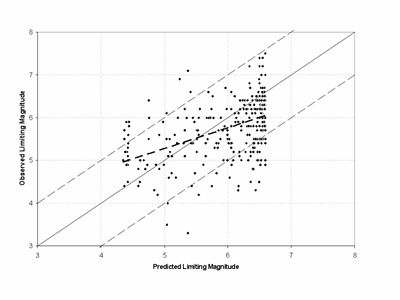 We view celestial objects from a distance and use their brightness to make observations. Amateur astronomers and scientists often make use of a celestial object’s limiting magnitude, which is a measure of the lowest or faintest apparent magnitude that can be seen using a particular instrument. In simple terms, limiting magnitude is often considered as the primary key in detecting celestial objects using an instrument that can detect the light emitted by the celestial body being observed.
We view celestial objects from a distance and use their brightness to make observations. Amateur astronomers and scientists often make use of a celestial object’s limiting magnitude, which is a measure of the lowest or faintest apparent magnitude that can be seen using a particular instrument. In simple terms, limiting magnitude is often considered as the primary key in detecting celestial objects using an instrument that can detect the light emitted by the celestial body being observed.
The limiting magnitude of a celestial object is greatly obscured by the presence of light pollution and sky glow in the observer’s location. These factors greatly reduce the limiting magnitude of the celestial body being observed and some of the faintest stars that comprise a constellation in the sky might not be visible. The limiting magnitude can also be used to refer to the detection of very faint stars using the naked eye near the zenith or the point directly above the observer during a moonless night sky. This brightness indicator can be used to determine the overall brightness of the sky and quantify the amount of light pollution.
Observers and amateur astronomers can make use of tables that have published values of limiting magnitude of celestial objects. If a telescope is to be used, calculating this particular value may be more convenient.
